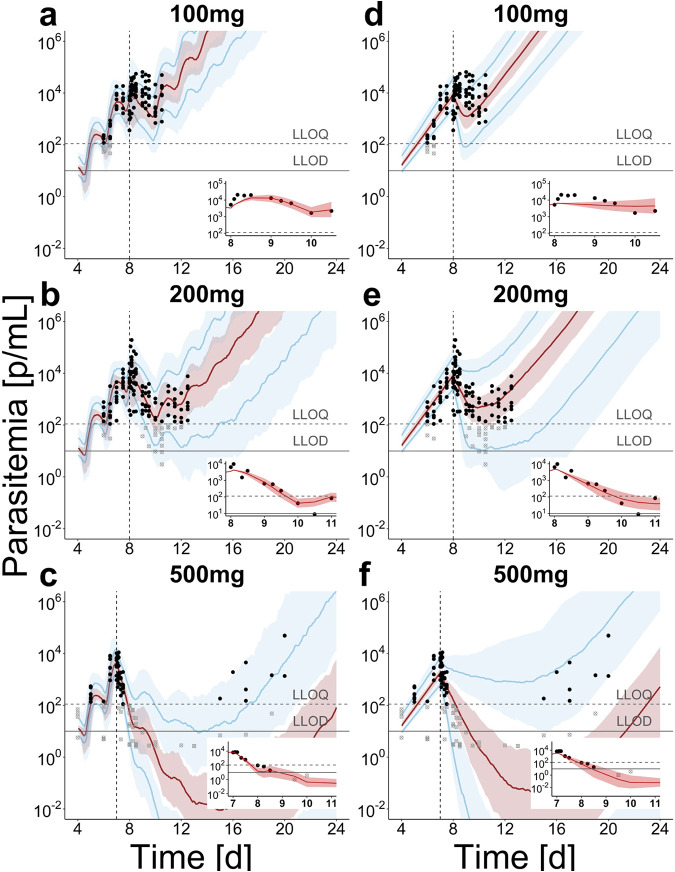FIG 4.
Population prediction after treatment with OZ439 in P. falciparum-human infection for mechanistic growth model S (a to c) and exponential model i (d to f). The simulated median (red) and 90th percentile (blue) with credible intervals over 100 trials with 20 subjects are compared to data of individual parasite densities (black dots) in the respective treatment group. For each treatment group, parasite clearance of a typical subject (subjects 1, 15, and 19) immediately after treatment is illustrated with individual predictions in the inset figures (for all subjects, see Fig. S12 and Fig. S13 in the supplemental material). Immediately after treatment with 100 mg OZ439 (a, d) an increase in parasite densities and transient decelerated parasite growth was observed, which is captured by model S through the lengthening of the parasite life cycle. After treatment with higher doses (b, c; e, f), this effect is less influential, with more prominent parasite killing by the drug. After treatment with 500 mg (c, f) only four out of eight volunteers exhibited parasite recrudescence (see individual data in Fig. S5 and Fig. S6 and posterior distributions in Fig. S11 and S12 in the supplemental material). Vertical line indicates time of treatment, and the horizontal lines indicate the LLOQ of 111 parasites/ml and LLOD of 10 parasites/ml.

